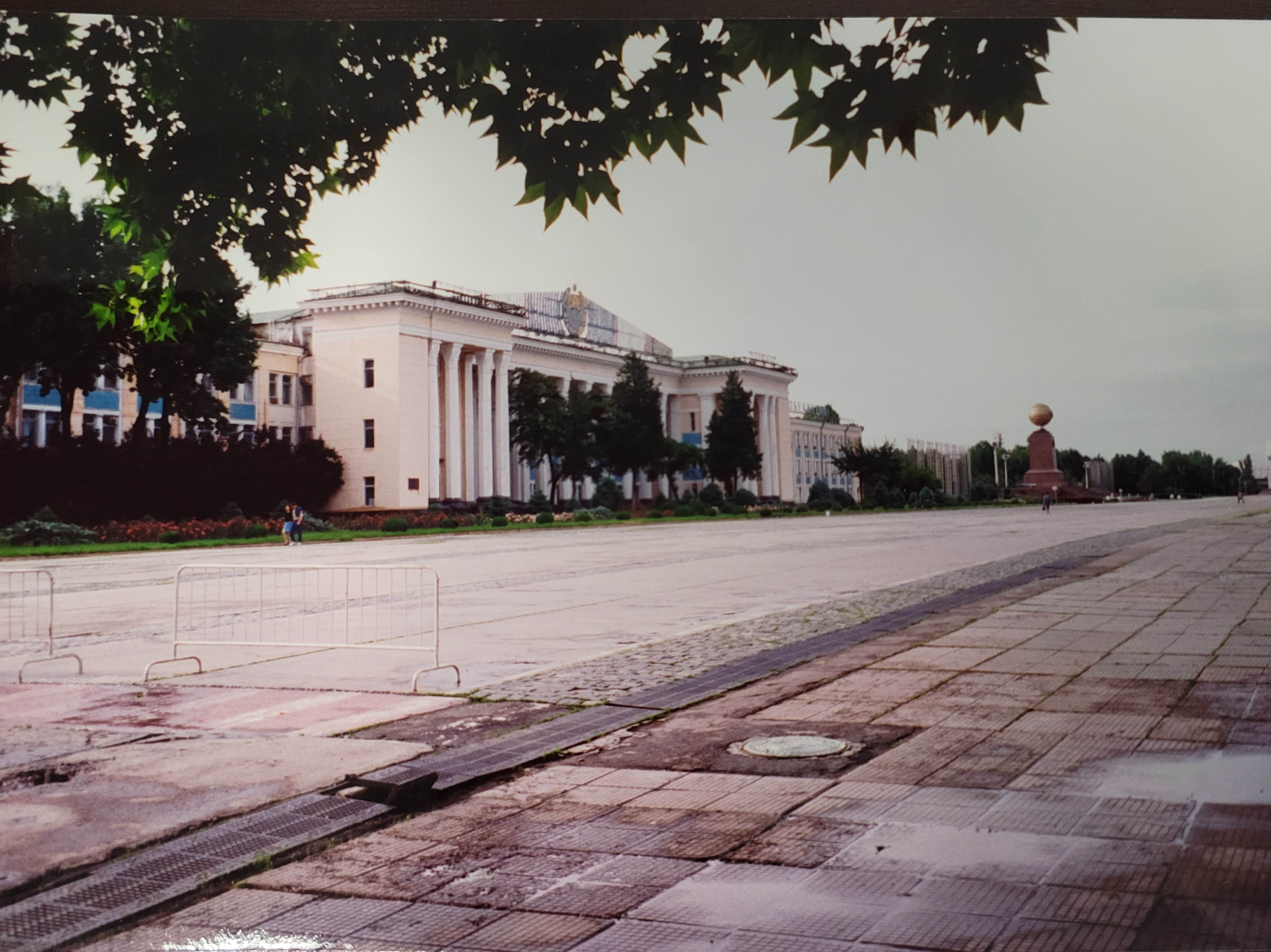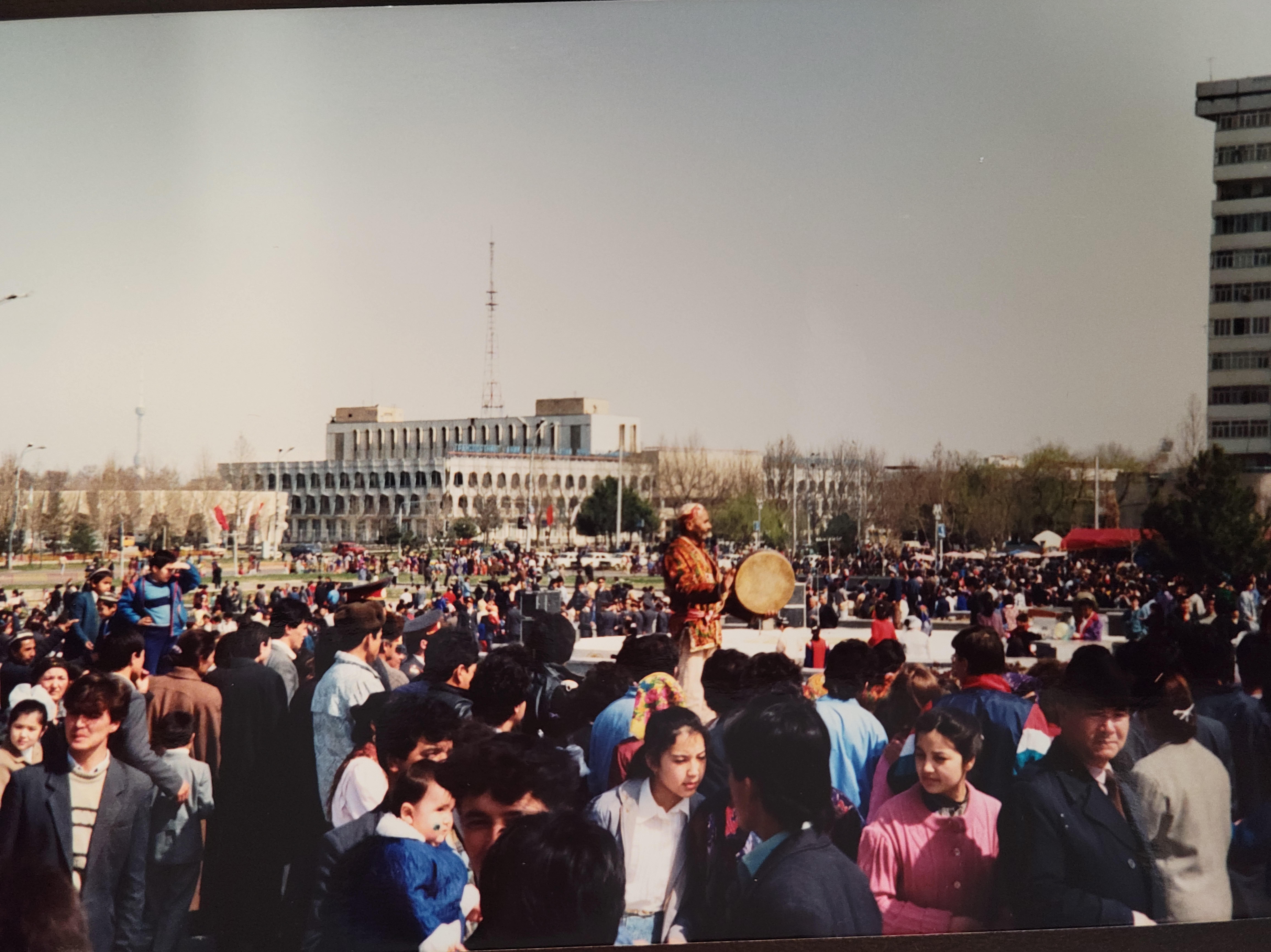Reflections on 'Year One' of Independence: Tashkent, Uzbekistan
Recent Articles
Author: Dr. Roger Kangas
12/20/2021
The collapse of the Soviet Union and the creation of new states in Eurasia are often framed as historical inevitabilities that had the support of the populations in the region. At the time, and among the populations affected, the opinions were mixed, especially as they experienced the transitions taking place. I had the good fortune of being a student in the Leningrad (now St. Petersburg) in the late-1980s, and later a research scholar in Tashkent, Uzbekistan during the 1991-1992 academic year, thanks to the International Research and Exchanges Board (IREX), which was one of the few ways an American could get to the non-Russian republics of the Soviet Union. Being part of the “class of 1991-1992” offered some interesting experiences, as the Soviet Union expired on December 31, 1991. Up to that point, I had to work with the Soviet Ministry of Education and Academy of Sciences, which carefully managed what American scholars could do and what research materials we could access. This all changed with the creation of the new states that year – each country was busy trying to establish not just governance structures, but also administrative apparatuses for all levels of society, higher education included. The Academy of Sciences in Tashkent thus had to reconfigure itself, as it was no longer subordinate to the broader Academy of Sciences of the USSR. Much of my own work still had to be coordinated through IREX’s office in Moscow, but soon that would change as educational and non-governmental organizations were allowed to open offices throughout Eurasia.
 The Navoi Library where Roger Kangas worked. It now serves as a building for the Uzbek government.
The Navoi Library where Roger Kangas worked. It now serves as a building for the Uzbek government.
As an academic, I can say this was an exciting time. For example, the Soviet-approved list of cities to visit was irrelevant to the government of the newly independent state of Uzbekistan. I was given free access throughout the country – locations, offices, and scholars. Focusing on the evolution of political and social movements in Uzbekistan, I had ready access to a range of personalities and materials. The Navoi Library was a key resource for me and the staff there provided ready assistance. Other American scholars experienced the same “thaw” in access to their research topic materials. A fellow American scholar gained access to incredibly sensitive materials on how the Soviet Union (and the Uzbek SSR) managed the official practice of Islam during the 1920s and 1930s. It is important to note that Uzbek scholars, as well, began exploring topics that might have been deemed too controversial during the Soviet period.
Of course, one also experienced the realities of changes taking place in the country. Independence did come at a price. The economy of Uzbekistan was still inextricably linked to others in the broader “Commonwealth of Independent States,” especially the Russian Federation. In January 1992, when President Boris Yeltsin agreed to float the ruble and enact the Western-advocated so-called “shock therapy” reforms, those of us in Tashkent immediately felt the impact. Prices increased dramatically and ruble-based salaries lost their value. A shortage of rubles meant that it was common to be unpaid. Into the Spring of 1992, it was clear that the hardship associated with “free market economies” was perceived negatively by ordinary citizens, some of whom were forces to sell personal items for food and essentials, or work in an ever-expanding grey and underground economy. Demonstrations at Tashkent State University in January 1992 over the lost value of student stipends were just one overt manifestation of this frustration. The narrative that stability and order was required before further reforms could take place resonated with many of those adversely affected in these early years.
 Nauruz celebrations in downtown Tashkent, Uzbekistan in 1992.
Nauruz celebrations in downtown Tashkent, Uzbekistan in 1992.
All was not gloom in these early months. There was an optimism about the new developments and what the new political status for Uzbekistan meant. Becoming a nation-state was an evolutionary process, and it is challenging to reflect and assess when people felt that they truly belonged to an independent “Uzbekistan.” The Uzbek government and people were having to figure out procedures, institutions, and historical narratives. How to you teach your own history in schools, when heretofore Soviet/Russian history was emphasized? When creating your own currency, how to you peg its value, what are the denominations, and what should the actual bills and coins look like? By the mid-1990s, all the Central Asian states had to tackle this.
New flags, anthems, street names – examples of re-crafting a national narrative – took time to create and digest. I recall friends and associates expressing an interest in Islam and other cultural influences – elements that had either been suppressed or discouraged during the Soviet period. The celebration of Nowruz in March of 1992 was an experience for both the government and the population: how to best represent this important tradition within Uzbekistan? Likewise, decisions had to be made regarding the celebration of Soviet holidays. Victory Day, commemorating the victory over Fascism during the Great Patriotic War (World War II) was a “positive link” to the Soviet experience with many veterans still alive in the early 1990s. Parks and memorials to those shared experiences still exist in the country today, in Tashkent and other major cities in Central Asia.
The international community also had to come to terms with these new countries. For one, I was pleased to see that the United States quickly recognized the independence of the post-Soviet states early and sent out diplomatic mission to each of the countries. In Central Asia, these usually meant small teams of Americans coming to the capital cities and setting up temporary embassies before permanent locations could be found. As the American community in Tashkent was incredibly small, it was easy to see the impact that this official presence would have. The opening of the new U.S. Embassy in Tashkent on Chilonzar Kuchasi (after months of being located at the Hotel Uzbekistan), was more than just symbolic: it demonstrated that the United States was committed to the sovereignty of Uzbekistan. As one of the Americans in Tashkent at the time, I could invite a few friends and colleagues to the actual embassy opening ceremony that was held on mid-March 1992. When the flag was raised and the small, but hearty contingent of Americans (officials and civilians) sang the national anthem, it was a profound moment of pride.
These early months were a mix of concern, uncertainty, and optimism. Few could predict how things would evolve. I daresay that looking back after thirty years, these sentiments still exist, but it’s now about what is the future holds for these independent and sovereign states.